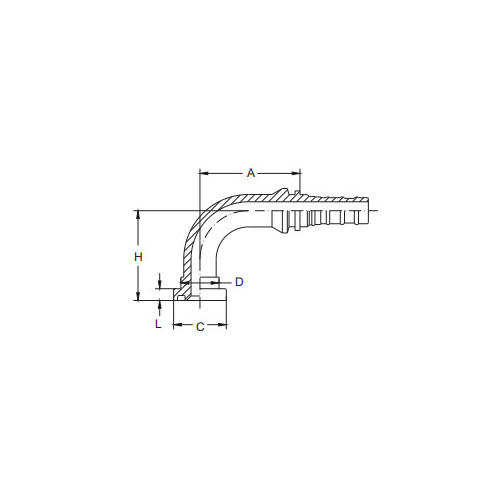Hydraulic Hose Fitting: The Essential Link in Fluid Power Systems
2025-05-22
A hydraulic hose fitting is a crucial component in any hydraulic system, serving as the connection between hoses, tubes, and other hydraulic components. Designed to withstand high pressure and ensure leak-free operation, hydraulic hose fittings play a vital role in the efficiency, safety, and reliability of hydraulic equipment used in industries such as construction, agriculture, manufacturing, mining, and transportation.

What Is a Hydraulic Hose Fitting?
Hydraulic hose fittings are connectors that attach hydraulic hoses to valves, cylinders, pumps, and other parts of a hydraulic system. They are specifically engineered to handle high-pressure fluid flow and are available in various shapes, sizes, and connection types to match different applications and system requirements.
Types of Hydraulic Hose Fittings
1. Permanent (Crimped) Fittings
These fittings are crimped onto the hose using a special machine, providing a secure and permanent connection. Ideal for high-pressure applications.
2. Reusable Fittings
Threaded fittings that can be assembled and disassembled without special tools. Suitable for field repairs and low- to medium-pressure systems.
3. Push-On Fittings
Easy to install without clamps or crimping, typically used for low-pressure applications.
4. Flange Fittings
Used in high-vibration or high-pressure systems where traditional threaded connections might fail.
Common Connection Types
JIC (Joint Industry Council)
NPT (National Pipe Tapered)
ORFS (O-Ring Face Seal)
BSP (British Standard Pipe)
DIN/Metric
These standards vary by region and application, and selecting the correct one is key to preventing leaks and maintaining system integrity.
Key Materials Used
Hydraulic hose fittings are typically made from:
Carbon Steel: Strong and cost-effective, used in most industrial applications.
Stainless Steel: Corrosion-resistant, suitable for harsh or marine environments.
Brass: Good for low-pressure or specialty applications.
Plated Fittings: Offer extra resistance against rust and wear.
Functions and Benefits
Secure Sealing: Prevents leaks and contamination in hydraulic lines.
High Pressure Handling: Withstands extreme fluid pressure without failure.
Flexibility: Allows movement and flexibility of hoses within systems.
Durability: Engineered for long life under tough conditions.
Ease of Maintenance: Enables quick assembly, disassembly, and replacement of hoses.
Applications of Hydraulic Hose Fittings
Construction Machinery: Excavators, bulldozers, loaders.
Agricultural Equipment: Tractors, sprayers, harvesters.
Industrial Systems: Manufacturing presses, injection molding machines.
Mining Equipment: Drills, conveyors, and hydraulic shovels.
Transport Vehicles: Trucks with hydraulic lifts or brakes.
Maintenance Tips
Inspect regularly for wear, cracks, or leaks.
Use correct torque when tightening to avoid over-stressing the fitting.
Match fittings properly with hoses and system specs to prevent compatibility issues.
Replace worn or damaged fittings immediately to avoid system failure.
Conclusion
Hydraulic hose fittings may be small, but they are fundamental to the performance and safety of hydraulic systems. Choosing the right type, material, and connection standard ensures maximum efficiency and reduces the risk of downtime. Whether you’re maintaining a piece of heavy machinery or designing a new fluid power system, investing in high-quality hydraulic hose fittings is a smart and essential decision.


